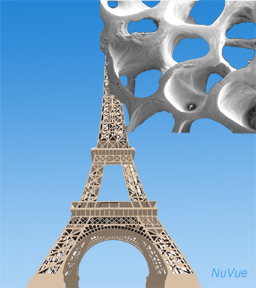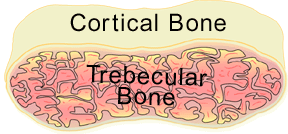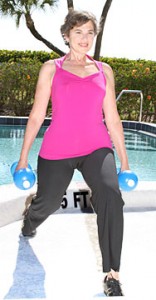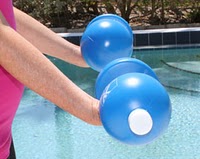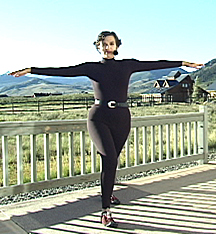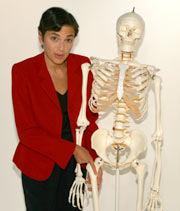 Nearly 30 years ago when I was in school, I wrote an exercise physiology paper on exercise and osteoporosis.
Nearly 30 years ago when I was in school, I wrote an exercise physiology paper on exercise and osteoporosis.
At that time there wasn’t much research available. But even then, the studies I found on tennis players, astronauts, and bed rest pointed in the direction that weight-bearing exercise could help maintain the bone density you have and even promote bone growth. I was intrigued. I’ve followed the research over the years and even created an osteoporosis exercise program.
In working with my clients, I often hear the question “what’s the difference between osteoporosis and low bone mass? (osteopenia) And what can I do about it?
Well to answer these questions, I have to start at the beginning.
Osteoporosis is a disease, which, over time, causes bones to become thinner, more porous and less able to support the body. Bones can become so thin that they break during normal, every day activity. Osteoporosis is a major health threat. 54 Million are at risk, nearly 80% are women.
Postmenopausal women are particularly at risk because they stop producing estrogen, a major protector of bone mass.
As we age some bone loss is inevitable. Women age 65 or men age 70 should get a bone mineral density test. If you have a family history of osteoporosis or other risk factors you may need a BMD much earlier.
The test is completely painless, non-invasive and takes only a few minutes.
It compares your bone mineral density to that of an average healthy young person. Your results are called your T score. The difference between your score and the average young person’s T-score is called a standard deviation. (SD)
Here is how to interpret your T score:
- Between +1 and –1: normal bone density.
- Between -1 and -2.5: low bone density (osteopenia).
- T-score of -2.5 or lower: osteoporosis.
Until recently it was thought that if you had low bone mass (osteopenia) you were well on your way to getting osteoporosis. But it’s now known even at this stage bone loss can be slowed down, stopped and even reversed. You and your doctor will have a number of options depending upon your particular condition.
Many MDs like to start with a calcium and vitamin D rich diet coupled with weight bearing exercise. For many of us, that’s all we need. Others will require medication and there are many bone-building medications available.
Remember it’s never too early to start taking care of your bones. The more bone density you have as a young person the less likely to end up with osteoporosis later in life.
EASE IN, BECOME MOBILE, GET STRONG, LIVE LONG!
May is Osteoporosis Prevention Month! It’s Never Too Late To Take Care Of Your Bones!
 by Mirabai Holland MFA Certified Health Coach, Certified Exercise Physiologist.
by Mirabai Holland MFA Certified Health Coach, Certified Exercise Physiologist.
EASE IN, BECOME MOBILE, GET STRONG, LIVE LONG! EXERCISE DVDS FREE USA SHIPPING!
Visit mirabaiholland.com

 TOTAL MEMBERSHIP ONLINE WORKOUT CLUB
TOTAL MEMBERSHIP ONLINE WORKOUT CLUB 










